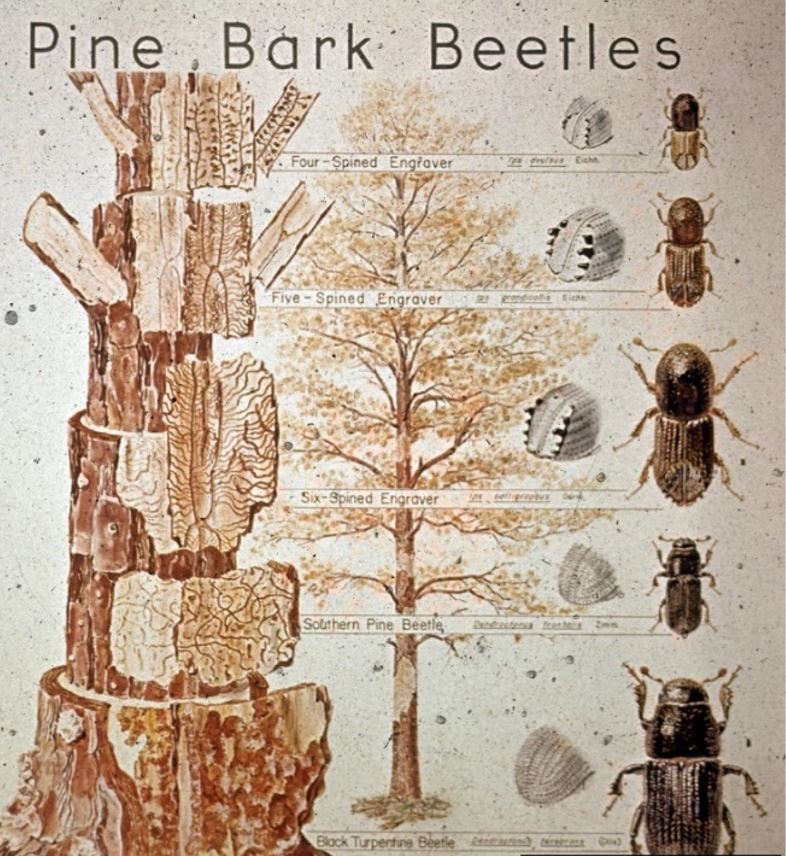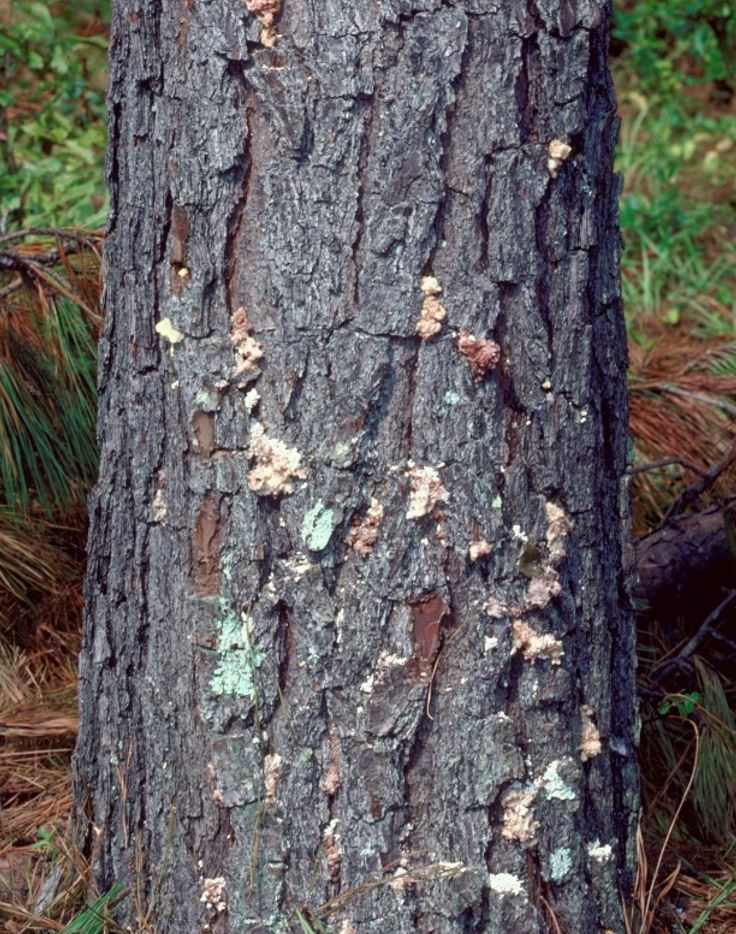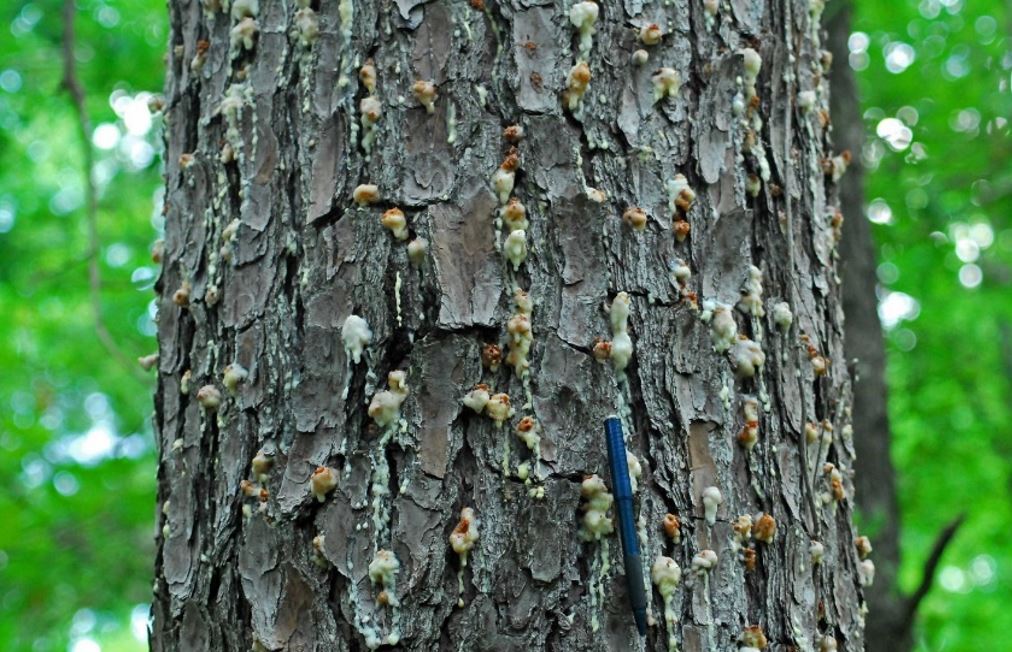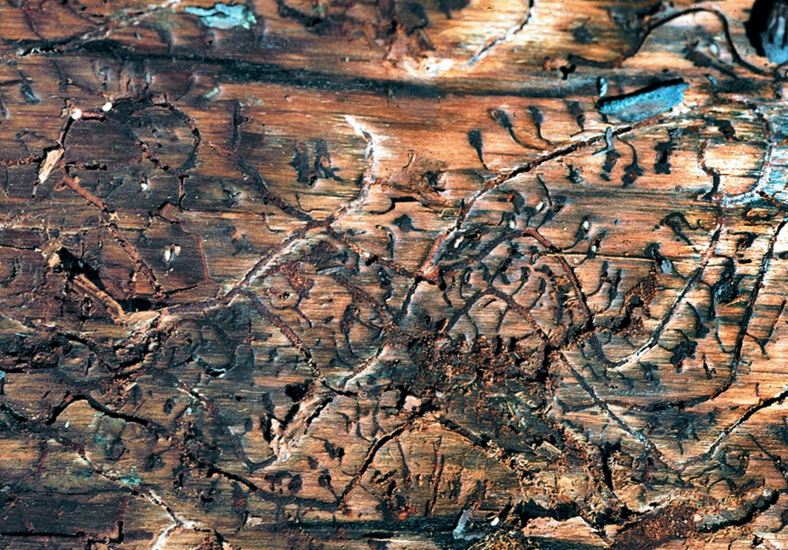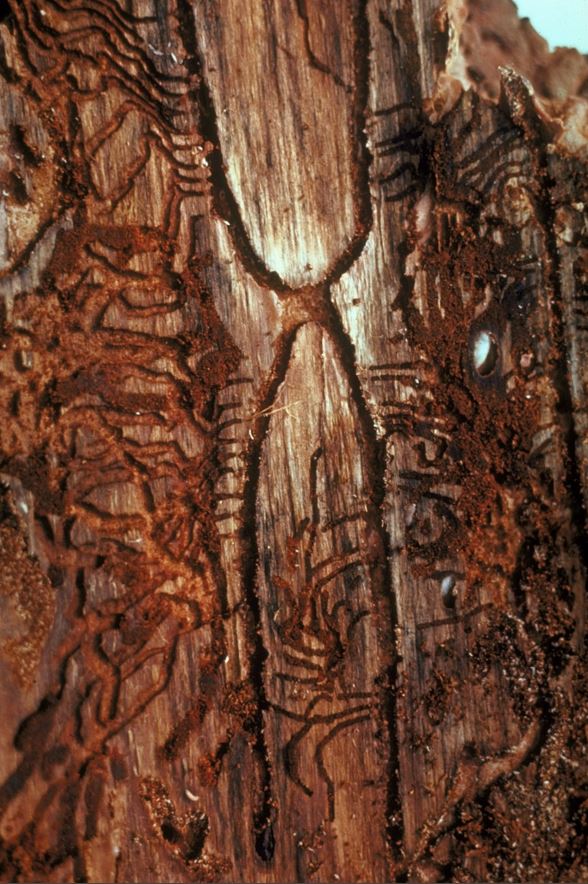For more specific information on SPB, click here.
Pine bark beetles are native to Georgia and can have devastating effects on pine trees. Pine bark beetles found throughout Georgia include the southern pine beetle (SPB), the black turpentine beetle (BTB), and three species of Ips engraver beetles, with a fourth found just in northern Georgia. Southern pine beetles can be the most destructive and can kill large numbers of healthy trees over many acres in a short period of time. Black turpentine beetles and Ips beetles are generally attracted to trees stressed from drought, storm damage or mechanical injury. Ips and BTB are seen most frequently by landowners and typically only kill a few trees at a time. To avoid or minimize bark beetle damage, it is important to have a basic knowledge of the insects and be capable of identifying the problem.
Identification
Although there is a size difference between the species, all Ips beetles are similar in appearance and are easily distinguished from other bark beetles. The rear end of their abdomens is scooped out and spined (four to six spines on each side). Both SPB and BTB have a more rounded abdomen. The black turpentine beetle is the larger of the two, at about 1/4 inch long, while the southern pine beetle is about 1/8 inch long. All of the pine bark beetles are roughly cylindrical and are dark brown to black in color. (Figure 1)
Location of Attack, Pitch Tubes, and Galleries
Some signs of bark beetles to look for are green needles on the ground, boring dust, pitch tubes and galleries under the bark. One of the clues is streams of resin that ooze out of the tree around a beetle entrance hole on the bark. These pitch tubes are the tree’s defense mechanism against the beetles, with resin pushing the beetle out. Severely stressed trees may not produce pitch tubes, in which case the only signs of early attack may be the entrance holes, brown boring dust found on the bark and around the base of the tree and green needles on the ground.
The black turpentine beetle usually attacks the lower part of a tree from ground level up to 12 feet. Their pitch tubes are an inch or more in diameter and often appear purplish (Figure 2). Southern pine beetle (Figure 3) and Ips beetle (Figure 4) attacks usually start well up the tree and then spread up and down the main trunk.
The pitch tubes of both are dime-sized and white to yellow in color. However, Ips pitch tubes can also take on an orange-pinkish color. Though generally, a little smaller, SPB pitch tubes look like popped popcorn in color and shape. SPB pitch tubes are usually found in the bark crevices, while Ips pitch tubes are usually found on the bark plates.
Once the beetles enter the tree, they start carving out galleries under the bark to lay their eggs. These galleries, with shapes specific to each species, are what eventually end up killing the tree by girdling it. Southern pine beetle galleries are curved or S-shaped and are normally packed with brown frass and boring dust produced by the beetles (Figure 5). Ips galleries are roughly Y- or H-shaped and radiate out from a central chamber (Figure 6). Black turpentine beetle galleries are short, small, D- or fan-shaped and cause very little damage to the tree.
Prevention and Control
Managing healthy forests is the best way to prevent pine bark beetle attacks. Attacks generally occur when trees have been damaged or are weakened by overcrowding, drought, saturated soils, storm damage or disease. It is important that pine species best suited to the area are planted and that recommended spacing intervals are followed. Thinning and competition control help maintain vigorous and healthy growing conditions. Promptly salvaging or destroying potential breeding material, such as pines that are severely damaged by wind, lightning, fire, disease, or insects, is important. Chemical control of Ips and SPB infestations under forest conditions is not recommended. Chemical control of newly attacked, individual BTB trees can be effective by spraying the base to the highest pitch tube on the trunk with an approved insecticide, according to label directions. Contact insecticide sprays on the outside of pine will act as a preventative for new BTB attacks, but will not kill the beetles already infesting the tree.
For more specific information on SPB, click here.
For further assistance or information about pine bark beetles, contact your GFC forester or call 1-800-GA TREES.
Resources

